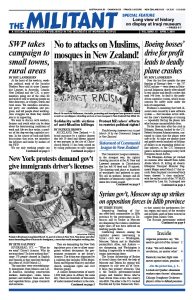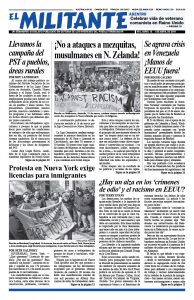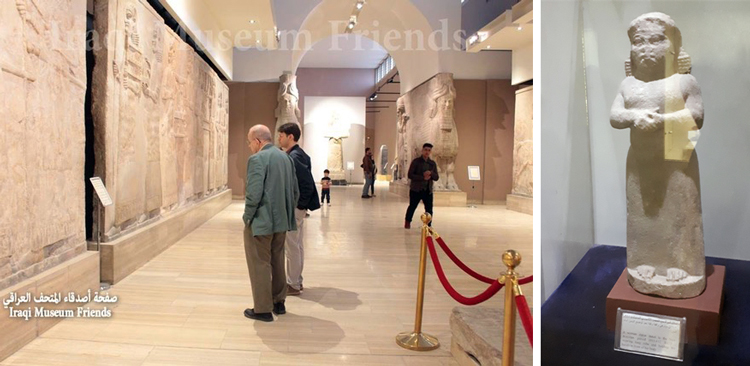BAGHDAD, Iraq — The greatest of all battles confronting the working class in the years ahead is “the battle to throw off the self-image the rulers teach us, and to recognize that we are capable of taking power and organizing society.”
Those are the closing words by Jack Barnes, national secretary of the Socialist Workers Party in the U.S., in Are They Rich Because They’re Smart? — Class, Privilege, and Learning Under Capitalism. That book was by far the best seller at a booth featuring Pathfinder Press titles during the Feb. 7-18 Baghdad International Book Fair. Visitors to the fair went home with some 150 copies of the title, out of a total of 1,460 Pathfinder books sold there.
Participating for the first time in this annual Iraqi cultural event, volunteers at the Pathfinder booth had a chance to join issues of vital importance for working people everywhere. These nonstop political discussions and debates were given added urgency in a country whose people for decades — against their own will — have been at the sharp end of the breakdown of the capitalist “world order.”
Throwing off “the self-image the rulers” foist on working people and recognizing what we are capable of — as volunteers at the Pathfinder booth talked about time and again with visitors — are a byproduct first and foremost of involvement in working-class social and political activity, not of books and ideas. But as workers begin to engage in struggles, as Barnes puts it in Are They Rich Because They’re Smart?, we also begin to “collectively educate ourselves.”
We become interested in how the capitalist system of exploitation came to be, the better to understand how it can be overturned and replaced by working people. We want to learn about the advances toiling humanity has made, from the earliest humans who arose from the animal kingdom through toolmaking and hunting; to rebellions by slaves, serfs and laborers throughout history; to revolutionary battles by workers and farmers more recently, including the victorious Bolshevik-led and Cuban socialist revolutions over the past century.
We learn to place ourselves in “the long view of history,” to borrow the title of a pamphlet by George Novack, an SWP leader of an earlier generation whose books on Marxism and history proved popular at the fair.
That’s why Pathfinder volunteers on our first visit to Baghdad were determined not to return home without a trip to the Iraq National Museum. Because there’s no better place to get a feel for that “long view of history.”
As the museum’s former director, Donny George Youkhanna, wrote in the American Journal of Archaeology in 2010, it contains “the material evidence for the development of civilized human society from the very beginning of its history. This entirely documented collection of finds from the cradle of civilization encapsulates the most essential cornerstones of our modern life, including agriculture, writing, laws, mathematics, astronomy, the arts, and warfare.”
What museum backers overcame
What’s on display at the Iraq National Museum is unique and extraordinary, not least when you consider the obstacles that stalwarts of the museum have overcome — including the infamous ransacking and thefts that were a direct result of the March 2003 U.S.-led invasion of Iraq.
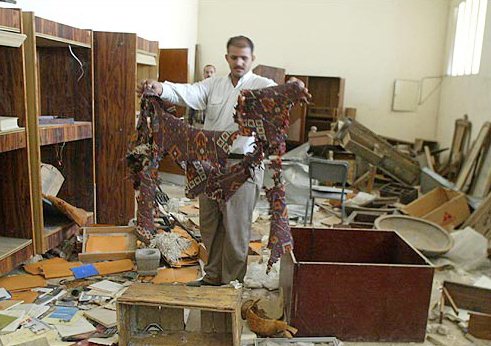
The earliest, rudimentary stone implements on display stretch back to 10,000-40,000 B.C. These are followed by stone tools for plowing, harvesting and grinding, as well as pottery, as humans started to till the earth and preserve foodstuffs to have a more reliable and bountiful diet. Further along, you see beautifully decorated tools and statuettes, early examples of art.
In galleries tracing the rise and fall of the Sumerian, Akkadian, Assyrian, Babylonian and other civilizations, you see how — as agriculture and domestication of animals were developed, and as the productivity of social labor increased — a surplus of food beyond that needed for mere survival became possible. On that basis, private property replaced communal life and came to dominate all social relations.
The most spectacular part of the museum is the Assyrian hall, which has massive statues and wall-reliefs from the Nimrud palace, all designed to inspire awe, and fear, of the king. At its zenith in the 7th century B.C., the Assyrian empire stretched from the Mediterranean to the mountains of western Iran, having subjugated the inhabitants in bloody massacres and forced them to pay tribute — the fruit of their toil — to the king.
Here we see how “the cradle of civilization” was at the same time the cradle of class-divided society and the exploitation of human labor. How a small number of men emerged, for the first time in human history, as a ruling class, subjugating other men and women in the course of bloody conflict.
We also see glimpses of the historic struggle as this new ruling class degraded the place of women in society, transforming them into property and laying the basis for millennia of women’s oppression. Early statues of fertility goddesses give way to kings and priests. Among the many impressive carvings and statues in the Assyrian hall, all depicting men — lords and servants — there is only one, crudely made statue of a woman.
The record of the origins of women’s oppression — and a course toward emancipation, as part of broader struggles by working people — are detailed in books by SWP leaders Evelyn Reed, Mary-Alice Waters and Joseph Hansen, such as Is Biology Woman’s Destiny?; Woman’s Evolution; Cosmetics, Fashions, and the Exploitation of Women; and others. These were also among the best-selling titles at the Pathfinder booth during the Baghdad book fair (and at many other such events the world over).
Century of oppression and upheaval
The Iraq Museum traces its origins to the division of the Middle East between British and French imperialism following their victory in World War I, the first world imperialist slaughter, over the Ottoman Empire, based in what we today call Turkey. The British rulers patched together modern Iraq under the rule of their puppet, King Faisal Ibn Husayn.
The Iraq Museum was founded in 1923 when Gertrude Bell — who had been instrumental in imposing King Faisal on the Iraqi people, at the service of British imperialism — nonetheless stopped archaeologist Leonard Woolley from plundering the country of 5,000-year-old finds from the ancient Sumerian city of Ur. The colonial looters’ plan had been to divide the spoils between the British Museum in London and the University of Pennsylvania’s Museum in Philadelphia. Starting with the historical objects she’d been able to keep in Iraq, Bell founded a museum in central Baghdad, using as the initial galleries two rooms in an Ottoman Empire barracks.
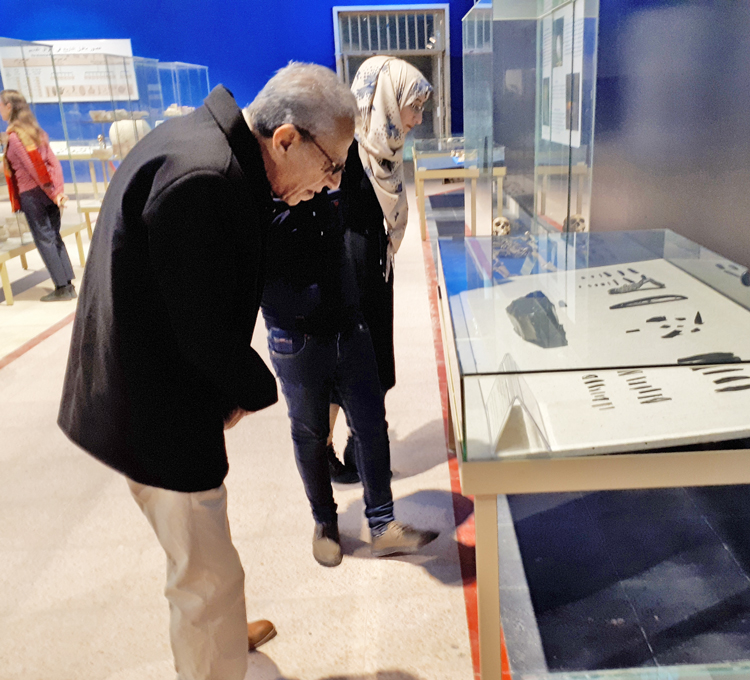
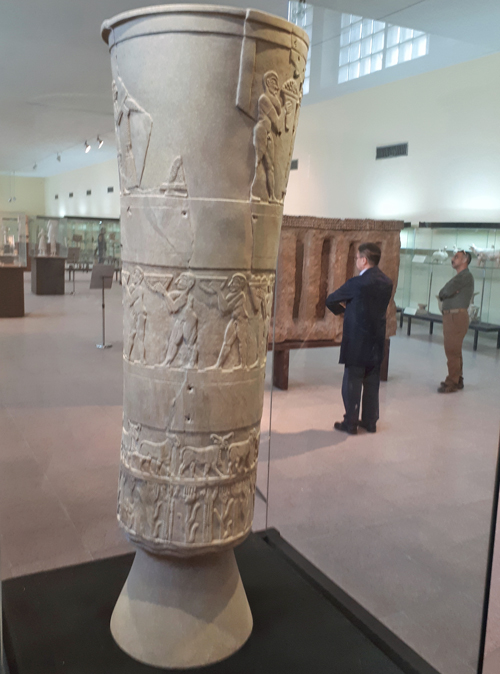
Bell’s actions stood in marked contrast to the colonial practice of pillaging archaeological treasures from the Middle East and elsewhere to fill grand national museums across Europe. This coincided with the British rulers’ decision — faced with rising national aspirations of the Arab, Kurdish and other peoples of the region — to rule Iraq not as a direct colony, but at arm’s length as a “protectorate.” London exerted this Iraqi “mandate” under the fig leaf of the so-called League of Nations (the pre-World War II forerunner of the United Nations), which Russian Bolshevik leader V.I. Lenin aptly dubbed “a den of thieves.”
In July 1958 a coup led by Gen. Abdul Karim Qasim, backed by a popular rebellion, swept the British-installed monarchy from power. It was during this period of upheaval and then counter-revolution that the museum moved to its current, purpose-built location, opening its doors in 1964. The year before, Qasim had been overthrown in a bloody coup that paved the way to the Baath Party dictatorship later in the decade.
Neither Qasim nor the bourgeois nationalist regimes that followed acted in the interests of workers and farmers in Iraq, while posturing as “anti-imperialist” defenders of Iraqi sovereignty. The tyrannical Saddam Hussein regime, especially, portrayed itself as the modern-day incarnation of “the cradle of civilization” in order to rationalize the Baathists’ oppression and exploitation of Iraqi working people, their brutal suppression of the Kurdish people, and their invasions of Iran and Kuwait.
As John Robertson explains in Iraq: A History, “The site of Babylon has been thoroughly trashed: first by Saddam Hussein, who built his own palace and effected restorations there to associate his dictatorship with an ancient era of real greatness [“greatness” accompanied by the unimaginable atrocities of the earliest forms of class rule, politically conscious workers would be quick to add — ÖJ]; then, after 2003, by the U.S. military, which set up a base directly atop the ancient ruins, their Humvees and tanks crushing Babylonian antiquities still lying underground.”
Many important objects that are part of Iraq’s national patrimony remain in European and North American museums. In the Baghdad museum, a sign sitting alongside a small section of Babylon’s Ishtar Gate says “it is worth mention” that the bulk of this magnificent entrance to the city was taken to Germany in the early 1900s and is one of the centerpieces of the Pergamon Museum in Berlin. Many Assyrian and other artifacts, including massive winged bull sculptures, are still kept by the British Museum, New York City’s Metropolitan Museum of Art and other high-falutin fencing operations.
Over the past four decades, the Iraq National Museum’s fortunes have been buffeted by violent conflict. During the 1980-88 war against neighboring Iran, the public galleries were dismantled and many pieces put into storage. The Saddam Hussein regime launched that war — in which hundreds of thousands were slaughtered on both sides — with the combined aims of crushing the 1979 revolution by Iranian workers, farmers and youth, as well as occupying and annexing rich oil fields and strategic waterways and port facilities there.
In the decade that followed the 1990-91 military assault on Iraq by a U.S. imperialist-led coalition, the people of that country faced immense hardship under U.N.-imposed economic sanctions and repeated bombing raids by Washington. Hundreds of thousands lost their lives due to malnutrition and lack of medicines. During these years, the museum remained mostly closed, only reopening fully in 2000.
In March 2003, Washington, London, and other imperialist regimes — “the coalition of the willing” — again invaded Iraq, this time ousting the Saddam Hussein dictatorship and imposing a U.S.-government-organized occupation. Just after the first U.S. troops arrived in Baghdad, the museum suffered 36 hours of unrestrained looting April 10-12, with some 15,000 items stolen. This is widely regarded as one of the worst cases of cultural vandalism in modern times.
In his 2010 article, Youkhanna describes in the most restrained terms how officials of the State Board of Antiquities and Heritage rejected an arrogant proposal from U.S. “Middle East expert” William R. Polk that they ship treasures abroad ahead of the invasion, which the entire world knew was coming. Instead, these Iraqi cultural workers sought to protect as much as possible Iraq’s archaeological patrimony. Objects were shipped to Baghdad from local museums. Five members of staff organized to move all portable objects to a secret location only they knew. The museum’s records and 40,000 historic manuscripts were placed in a bomb shelter. Movable shelves were put in closed position and welded together. Sandbags were piled to protect the bulkier items, and doors and windows were blocked with concrete. These actions saved the bulk of the collection.
Efforts to retrieve stolen pieces began within a week of the looting. Many invaluable pieces were retrieved in the first months, including the “Warka Vase,” and the “Lady of Warka,” a stunningly realistic, life-size representation of a Sumerian woman’s head, both dating back to ca. 3,000 B.C. Eventually, some 7,000 pieces were retrieved.
Destruction and restoration
Iraq has continued to suffer devastation of its cultural heritage, with the most extreme destruction coming at the hands of Islamic State, as the terrorist group held large parts of Iraq from 2014 to 2017. In Mosul, the site of the ancient city of Nineveh, the group destroyed archaeological sites, the Mosul museum and the two main libraries.
All galleries of the Iraq National Museum are now open to the public six days a week. While security is tight and the struggle to secure sufficient funding is obvious to any visitor, the buildings and grounds are beautifully maintained, and items have been professionally restored and displayed. Volunteers from the Iraqi Museum Friends are eager to help visitors get the most out of the experience.
There is a daily stream of museum-goers, some from abroad, but mostly Iraqis of all ages taking in the wealth of knowledge and enjoying their national patrimony. Many of them recognize that it’s the patrimony of humanity, as well.
